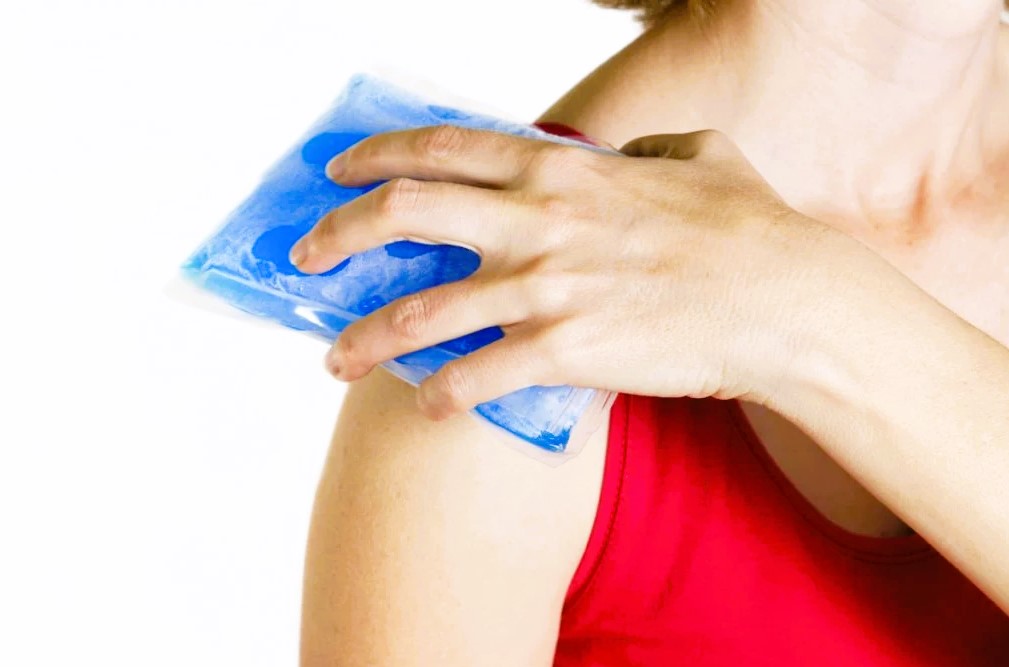How To Apply Hot And Cold Compress Correctly
Tips From Orthopedic Doctor Syed Imran
Tips From Orthopedic Doctor Syed Imran
Introduction
In the realm of home remedies, hot and cold compresses stand out as simple yet powerful tools for managing various ailments. Their application, rooted in the principles of thermotherapy, can provide relief from pain, swelling, and muscle spasms, among other issues. The key to harnessing their benefits lies in understanding their proper use. Being an orthopedic dr, in this article I will delve into the natures of hot and cold compresses, discerning their appropriate applications, and guiding on their correct usage. Additionally, it will address common mistakes and offer additional tips for maximizing their effectiveness. Let’s embark on this insightful journey to explore the therapeutic powers of temperature manipulation through hot and cold compresses.
Understanding Hot And Cold Compresses

The benefits of these compresses are numerous. Hot compresses are excellent for relaxing tense muscles, increasing blood flow, and easing pain in chronic conditions like arthritis or sore joints. They help in loosening stiff joints and reducing muscle spasms. On the other hand, cold compresses are ideal for acute injuries, such as sprains or strains, where they reduce swelling and numb pain. They are also beneficial in managing fever and acute pain. The choice between hot and cold therapy depends largely on the nature of the injury or discomfort being treated.
When To Use Hot Compress
Hot compresses are particularly effective in back pain relief and situations involving chronic pain, lumbar spine muscle stiffness, and joint discomfort. Conditions like arthritis, chronic back pain, and menstrual cramps can significantly benefit from the application of heat. The heat from the compress works by dilating blood vessels, which increases blood flow to the affected area. This enhanced circulation delivers more oxygen and nutrients, aiding in the healing process and reducing muscle spasms and stiffness.
Furthermore, heat stimulates sensory receptors in the skin, which means that applying a hot compress can decrease transmission of pain signals to the brain, thereby alleviating discomfort. This mechanism is particularly effective in chronic conditions where ongoing pain relief is sought. It’s important to note that heat should not be applied to acute injuries or inflamed areas, as it can exacerbate swelling.
When To Use Cold Compress
Cold compresses are ideal for acute injuries like sprains, strains like upper back strain, bruises, or inflammation. They are also effective in reducing swelling after surgery like knee replacement and managing fever. Cold compress is also effective in certain arthritis as it reduces inflammation during arthritis flare. The cold compress narrows blood vessels, which slows blood flow to the area, thereby reducing swelling and inflammation. It also numbs the affected area, providing pain relief.
The mechanism of action involves the cold compress causing a decrease in nerve conduction velocity, which helps in reducing the sensation of pain. The reduced blood flow also limits the accumulation of fluid in the injured tissues, preventing or minimizing swelling. It’s crucial to remember that cold therapy is not suitable for certain conditions, such as stiff muscles or chronic pain, as it can worsen these conditions by further stiffening the muscles.
How To Apply A Hot Compress Correctly
To effectively apply a hot compress, follow these steps:
- Select a Heat Source: The first step is choosing the right heat source. Common options include a heating pad, hot water bag, hot water bottle, a heated gel pack, or a warm, damp towel. Each has its advantages, depending on availability and specific needs. A hot water bag or bottle is reusable and can retain heat well, a heated gel pack is often more flexible and can mold to the body’s contours, and a warm, damp towel is a quick and easy solution that can be heated in a microwave.
- Check the Temperature: Before applying the compress, it’s vital to ensure it is at a safe temperature. The compress should feel warm to the touch but not uncomfortably hot. Testing the temperature on your forearm is a good way to gauge its safety.
- Prepare the Area: The area of the body where the compress will be applied like the lumbar spine muscle stiffness area or sore joints should be clean and dry. This helps in preventing any skin irritation and ensures that the heat from the compress is effectively transferred to the skin.
- Wrap the Heat Source: To protect your skin from direct heat and to distribute the warmth evenly, wrap the heat source in a thin towel. This layer acts as a barrier to prevent burns and makes the compress more comfortable.
- Apply to Affected Area: Place the wrapped compress on the affected area, ensuring that it covers it adequately. The recommended duration for application is between 15 to 20 minutes. This duration is long enough to allow the heat to penetrate and provide relief but short enough to prevent skin damage.
- Repeat if Necessary: If needed, the hot compress can be reapplied every 2-3 hours.
How To Apply A Cold Compress Correctly
For effective cold compress application, follow these instructions:
- Select an Appropriate Cold Source: Choose from options like ice packs or frozen gel packs. Whatever you choose, it should be cold enough to provide relief but not so cold as to cause damage.
- Ensure Proper Insulation: Always encase your chosen cold source in a cloth or towel. This is crucial to prevent direct contact with your skin, which could lead to frostbite or other skin injuries.
- Application to the Injury: Carefully place the wrapped cold compress onto the affected area like the upper back strain area. This should be done for about 10-15 minutes at a time. This duration is optimal to reduce swelling and numb pain without causing skin damage.
- Regular Skin Monitoring: While applying the compress, periodically check the area of skin it’s in contact with. You’re looking out for any signs of frostbite, which can include changes in skin color to white or very pale, indicating that the skin is getting too cold.
- Follow a Timed Interval Approach: After applying the cold compress for 15 minutes, remove it for at least 20 minutes. This interval approach helps to prevent skin damage and allows the body to respond naturally to the injury. It’s a balance between providing relief and ensuring safety.
- Elevation of Injured Area: If the injury is on a limb (like an arm or leg), try to elevate it while applying the cold compress. Elevation helps to reduce swelling by decreasing blood flow to the injured area, complementing the effects of the cold compress.
Common Mistakes To Avoid
Common mistakes in using hot and cold compresses include:
- Incorrect Temperature: Using a compress that is too hot or too cold can cause skin damage.
- Overuse: Prolonged application can lead to tissue damage or frostbite.
- Wrong Timing: Applying heat to a fresh injury or cold to a chronic condition can worsen symptoms.
- Ignoring Skin Reactions: Not monitoring the skin can lead to burns or frostbite.

To avoid these mistakes, always check the temperature before application, limit the use time, and choose the correct type of compress based on your condition.
Conclusion
Hot and cold compresses are simple yet effective tools for managing a variety of health conditions like sore joints, knee replacement, lumbar spine stiffness, and upper back strain, Remember to use hot compresses for chronic pain and stiffness and cold compresses for acute injuries and inflammation. Proper application and adherence to safety guidelines are paramount to avoid potential harm. Be mindful of common mistakes and incorporate additional tips for enhanced effectiveness. Most importantly, as an orthopedic doctor these compresses should complement, not replace, professional medical care. Embrace these therapies wisely to enjoy their full benefits.